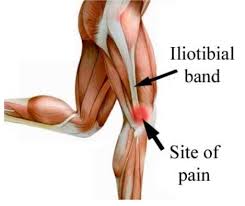Understanding Tendon Health: Tips for Injury Prevention
The Importance of Tendon Loading
Tendons thrive on regular loading to maintain their mechanical and physiological properties. However, they do not respond well to sudden increases in the intensity or frequency of activity. Proper load management is crucial for tendon health:
- Distance Runners: Often face issues with frequency (how often they are exposed to high load).
- Sprinters: Typically deal with load intensity (how hard they train).
In both cases, correct load management leads to positive outcomes, while poor management can result in tendon failure. Chronic repetitive movements or acute overload, especially with insufficient rest, are detrimental to tendon health.
Tips for Tendon Injury Prevention
Injury prevention is crucial for all athletes, and many principles are applicable across various sports. Here are key strategies to avoid tendon injuries:
1. Work on Technique
- Importance: Poor technique is a leading cause of chronic tendon pain.
- Action: Seek guidance and help if you are new to a sport. Correct technique reduces the risk of tendon overuse and stress.
2. Address Poor Body Mechanics
- Examples: Excessive foot pronation, knee valgus, poor hip and pelvic control, and scapular instability can lead to tendon overuse.
- Action: Assess and correct any biomechanical issues to prevent undue stress on tendons.
3. Avoid Training Errors
- Individualize Your Training: Design a personalized training program that includes periodization, specificity, and controlled overload to prevent overtraining.
- Action: Work with a coach or trainer to create a program tailored to your specific needs and capabilities.
4. Warm Up Properly
- Benefits: Increases blood flow to muscles, reduces muscle viscosity, and prepares your body for the upcoming training session.
- Action: Incorporate a thorough warm-up routine before any physical activity.
5. Use Appropriate Equipment
- Sport-Specific Needs: Choose equipment that suits your body mechanics and the demands of your sport.
- Runners: Select footwear that supports your foot mechanics.
- Tennis Players: Choose a racquet that matches your individual characteristics.
- Action: Invest in quality equipment and replace it as needed.
6. Stay Hydrated
- Importance: Maintaining optimal fluid balance is crucial, especially after training or competitions.
- Action: Drink plenty of water before, during, and after physical activity.
7. Focus on Nutrition
- Role: Proper nutrition aids recovery by replenishing glycogen stores and providing necessary proteins.
- Action: Follow a balanced diet that supports your training and recovery needs.
8. Prioritize Rest
- Listen to Your Body: Rest if you feel tired, notice a decrease in performance, or experience persistent niggles.
- Action: Incorporate rest days into your training schedule to avoid overtraining.
When to Seek Professional Help
If you experience tendon symptoms, seek a professional assessment. A specialist can direct you toward effective treatments and identify factors that may be contributing to your tendon issues.
See also:
- Part I: Tendonitis vs Tendinopathy – The difference!
- Part II: Approach to tendon treatment
- Running Related Injuries (RRI’s)
- Ankle Injuries
References:
- Matava MD.American Orthopedic Society for Sports Medicine. 2008.http://www.sportsmed.org/secure/reveal/admin/uploads/documents/ST%20Overuse%20Injuries%2008.pdf
- Magra M, Maffulli N.Genetic aspects of tendinopathy. J Sci and Med Sport. 2008;11(3):243–47
- Almekinders LC, Temple JD.Etiology, diagnosis, and treatment of tendonitis: an analysis of the literature. Med Sci Sports Exerc. 1998;30(8):1183–90
- Cook JL, Khan KM, Maffulli N, et al.Overuse tendinosis, not tendinitis. part 2: applying the new approach to patellar tendinopathy. The Phys and Sportsmedicine. 2000;28(6):1–11
- Witvrouw E, Bellemans J, Lysens, et al.Intrinsic risk factors for the development of patellar tendinitis in an athletic population: a two-year prospective study. Am J Sports Med. 2001;29(2):190–95
- Malliaras P, Cook JL, Kent P.Reduced ankle dorsiflexion range may increase the risk of patellar tendon injury among volleyball players. J Sci Med Sport. 2006;9(4):304–9



